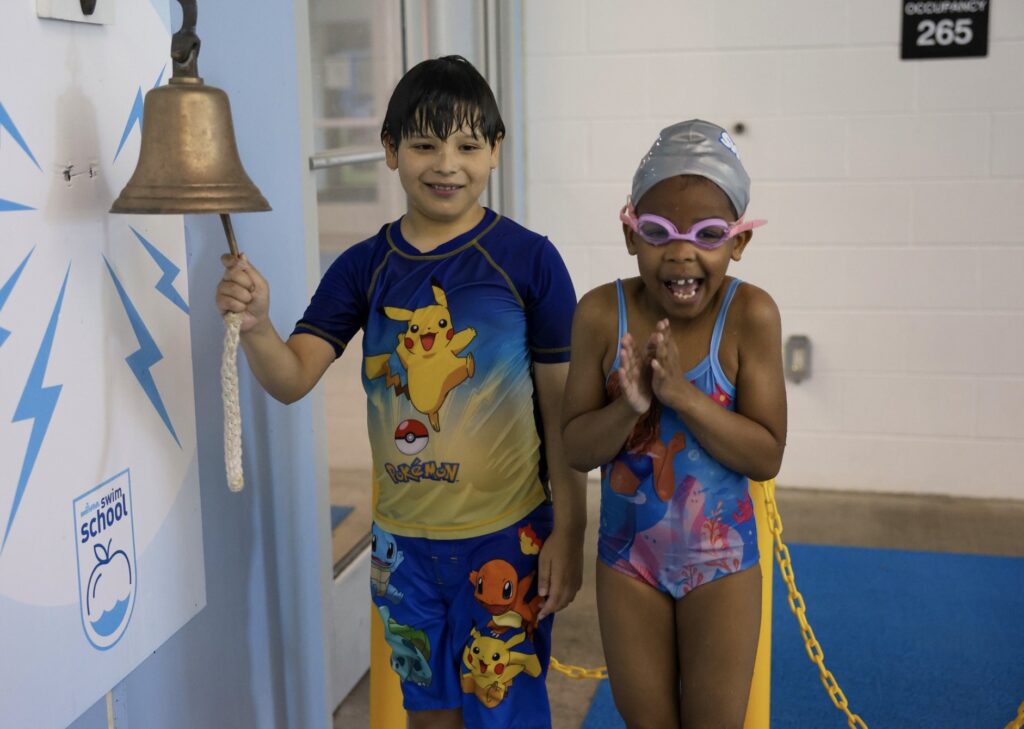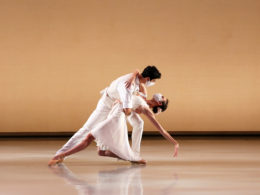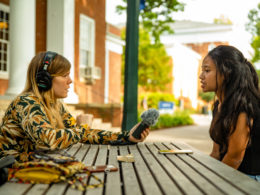Whether it’s teaching a child to swim for the first time, training the next generation of athletes or providing a space for recovery and rehabilitation, SwimRVA has gone above and beyond to become a community hub. With four different locations across the Greater Richmond Area — each comprised of tailored, accessible and low-cost programs — this organization strives to drown-proof Richmond and inspire people to get active through aquatics.
May is National Water Safety Month, so there’s no better time to hear from SwimRVA Director of Communications Scott Bennett as he shares the importance of water safety knowledge and the power of aquatics.
What is the core mission of SwimRVA?
The real mission of SwimRVA is to change lives through aquatics. It’s very simple, we have a vision to drown-proof Richmond, and we do that through different programming. We have swim lessons, water fitness classes, a swim team, water polo, artistic swimming and special programs like learn-to-swim and our lifeguard development program.
One of the things we’re really homing in on now is our wellness program. Fighting senior isolation is a huge part of what we do — we’re not just a facility where people just splash around. We want people to meet other people, become social, build relationships, build friendships. We believe that aquatics is the vehicle to not only become water safe, but also active, healthy and fit for the rest of your life.
What barriers do you see that limit access to swimming?
The main barrier is that swimming is expensive. It costs money to learn how to swim. Pools aren’t free, and they’re not free to operate. Another barrier is access to water. There’s a lot of communities that don’t have access to water, whether it’s outdoor summer pools or indoor pools in recreation centers. Lastly, there is a lack of access to programming. Even if you do have water, is there programming in a place where people can participate and learn how to swim and stay active in water?
Fifty percent of the population do not know how to swim. Seventy-nine percent of children that qualify for free and reduced lunch do not know how to swim. It’s really eye opening to see the transformation people have when they go through our programs, and it’s not only water safety, but it’s building positive success habits.
Can you describe the type of programs you offer?
The Learn to Swim program existed through the YMCA of Greater Richmond before us, and we piggybacked off of them. Our program consists of seven, 45-minute lessons during the school day, and we pay for transportation, for the instructors, the lifeguard, we pay for everything because it’s part of their curriculum.
We’ll test them on day one and put them in stations. Each station has five or six skills. When they master those skills, they get to move up and ring the bell of success and put a sticker on their certificate. Just passing that first station is huge for the students, for self-esteem, for confidence and to continue to move on to make more goals.
When we started, we were probably doing 15 different schools, we’re now up to 41 schools in the Learn-to-Swim program. If you combine that with what NOVA of Virginia Aquatics and YMCA are doing, we’re serving a total of 124 elementary schools in all 12 school districts throughout the Greater Richmond Region, which is really exciting. There’s still some work to be done, so we can make it where every single child has access to learning how to swim.

Then, we have our lifeguard and workforce development program, which started at Carver College Career Academy, that brings high school students with all levels of education in swimming through a semester-long program that builds their key skills to learn how to swim and to save a life. By progressing them through the Learn to Swim curriculum, we teach them all four strokes and develop their lifeguard specific skills. Once they successfully get through that program, we give them a job on the spot. We have found that they’re excited to see that there’s a career path for them.
This program does more than making them lifeguard certified; they are set on a path to start a career in aquatics.
How do you measure success or impact within the organization?
As I mentioned previously, our programs have grown tremendously. Internally, the growth in the size of our organization has been phenomenal over the last 13 years, we’ve seen great progression in how we facilitate our programs.
Another way we measure impact is through our stations, with our Learn to Swim program. Our goal is to get every child through station three out of seven, because station three is when you start to see the kids getting comfortable in the water. When we were first starting, I remember this one kid who was scared to death — screaming, crying, did not want to get in — and by the end of the seven lessons, he was jumping in, giving us hugs and couldn’t wait to come back and do more swimming. Our program has changed that child’s life forever, because ultimately, he now sees water positively.
How can more people get involved in water safety or swim education?
Number one, become an advocate for aquatics. I think that’s the most important thing.
Talk to your local community members, talk to your friends, talk to your neighbors, talk to your administrators, talk to your government. Tell them swimming matters. Aquatics matter. Learning to swim is a necessary lifesaving skill that every single child should have and should be able to do.
Two, is learning how to swim. If you don’t know how to swim, learn. Even if you’re 76 years young it doesn’t matter, learn. What you’re doing is telling your family, kids and your grandkids that learning how to swim is important and it’s necessary. Educate yourself on water safety, because when you go to the beach, river, lakes, different bodies of water, it’s important and it can save lives.
Learn how to get involved in SwimRVA’s mission here.










